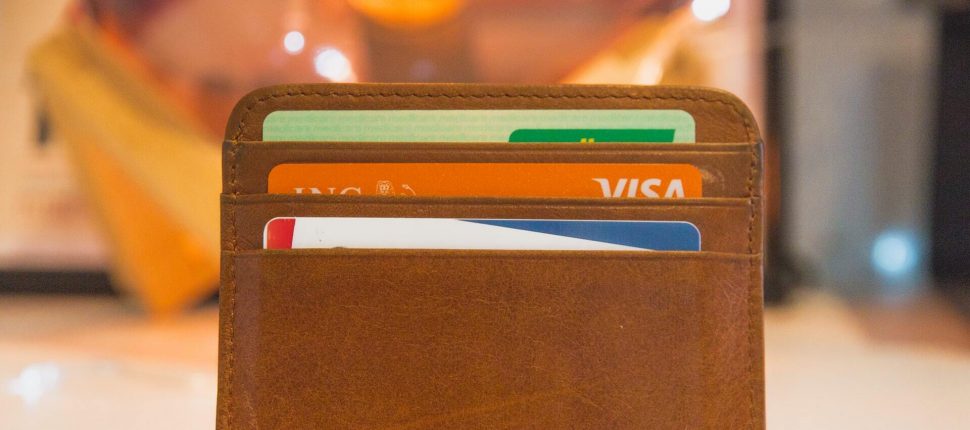- >Best Crypto Credit Cards
- >Unbanked Blockcard Review
- Impressive cashback rewards
- Excellent referral program
- Accepts a variety of different cryptocurrency including BTC, BAT, ETH and more
- FDIC insured checking account for BlockCard customers
Pros & Cons
Pros
There’s a potential for up to 6.38% cashback rewards
It’s a Visa card
Rewards increase as the card is used for more spending
Earn bonus TERN by referring your friends
Cons
TERN must be staked in order to gain access to the best cashback rewards tiers
Cashback rewards are paid in TERN
Funds deposited to Blockcard are converted to TERN
Monthly fee if the card is not used for at least $750 in purchases
There are a lot of fees associated with this card
What is the Blockcard?
The Blockcard is a crypto debit card built around the TERN token. Most of the functionality around the card is focused on adding utility to TERN. For example, users must stake TERN in order to receive the best possible rewards via a Blockcard. Additionally, those cashback rewards are paid in TERN. It should be noted that this sort of close relationship between a crypto debit card and its proprietary token is usually a red flag.
What are the Benefits of Blockcard?
The key benefits of the Blockcard are the cashback rewards associated with the various cards that they’ve made available. These rewards can range from 1-6% depending on the card chosen, and there are additional awards available to users who make heavy use of the card on a monthly basis. The card also creates a way for users of thirteen different digital assets to turn those assets into spendable cash in the real world.
However, these benefits are mostly enabled by the requirements related to the TERN token and how it is used with the Blockcard. The fact that users must be willing to stake a small crypto token like TERN in order to gain access to the rewards creates the very real possibility that all of these benefits and rewards will be more than offset by a drop in the TERN token’s USD-denominated trading price.
The Blockcard is just one part of the Unbanked ecosystem, which also includes a FDIC-insured checking account and a mobile app for buying and selling crypto.
Potential Blockcard Dealbreakers
Like many other cards we’ve reviewed that have high, enticing cashback rewards, the dealbreaker with the Ternio Blockcard is the close relationship the crypto debit card has with the TERN token.
Users must be willing to stake TERN tokens if they wish to gain access to the largest cashback rewards, and the future price of TERN is highly speculative. Small cap crypto tokens have been known to drop by 90% or more against the US dollar in the past, so agreeing to stake TERN in exchange for cashback rewards on a debit card is a highly-risky decision.
Additionally, the staking process for TERN and the Blockcard works on a 30-day basis, means you won’t be able to exit the TERN market right away if you decide you want to opt out of the system. If the TERN Market starts crashing, you’ll have to keep watching the value of your TERN tokens falls until the end of the month.
It should also be noted that you can’t actually store the cryptocurrencies supported by Ternio in your account balance. Instead, all of your crypto tokens must be converted to TERN before they can be used as the basis of the various charges you make to your Ternio Blockcard.
Is Blockcard Right for Me?
Unless you believe in the underlying value of TERN, you may want to avoid the Ternio Blockcard. Like some of the other crypto debit card options that are attached to proprietary tokens, the relationship between the Ternio Blockcard and the TERN appears to be built on shaky ground.
Anyone who decides to get this card due to the high cashback rewards that are available with it needs to understand the risks they are taking by agreeing to stake TERN tokens for 30-day periods of time. Some people will undoubtedly get lucky and profit through the Blockcard system, but there is legitimate risk in the endeavor.
Ternio Blockcard Frequently Asked Questions
The TERN token cannot be separated from the Ternio Blockcard. Even if you get the entry-level card that only offers 1% cashback rewards and does not require any staking of the TERN token, those rewards that you receive will be denominated in TERN. Users who are willing to stake more TERN are able to gain access to increased levels of cashback rewards. Cardholders who use the card heavily can also access additional rewards that are also paid out in TERN rather than US dollars or even just a more popular crypto asset.
While Ternio hype the Ternio Blockcard as a key example of the utility of the TERN token, it should actually be viewed as a serious red flag related to highly-speculative and potentially-fraudulent investment schemes that have become commonplace in the crypto debit card industry.
In addition to a $10 to $50 fee associated with the original purchase of a Ternio Blockcard, there are a number of other potential fees to worry about.
The first fee that will stick out to you if you look at the fine print is that the Ternio Blockcard comes with a monthly fee of $5.00. However, this fee is waived if you use the card for at least $750 worth of purchases in a single month.
There are also potential fees to worry about when you are making a transaction. While there is no fee on a normal, domestic swiping transaction, there is a $1.00 fee on domestic PIN-based transactions and a $2.00 fee on international PIN-based transactions.
There are also fees to worry about when interacting with ATMs. Domestically, there is a $3.00 for for cash withdrawals, a $0.50 fee for a declined cash withdrawal, and a $0.50 fee for a simple balance inquiry. Internationally, these fees are increased by $0.50.
Finally, there is a $10 or $50 fee associated with card replacements. The fee will depend on what kind of card the user is trying to replace.
The Ternio Blockcard is able to offer 6% cashback rewards (and potentially even more than that) due to the close connection between this crypto debit card and the TERN token. You can read more about how the TERN token is used in the Ternio Blockcard system, but the main thing you need to understand is that this is a highly-risky setup where users could end up losing more money through the TERN staking requirement than they are receiving in rewards from their Ternio Blockcard.
There is a $500 daily limit on cash withdrawals made via ATMs and point-of-sale systems with the Ternio Blockcard.
People often want to know how to better compare the rewards made available via the Ternio Blockcard and the Crypto.com Visa card. While the Ternio Blockcard offers better rewards if you’re just looking at the cashback options, it should be noted that the Crypto.com Visa card also has a number of other benefits that need to be considered to understand the whole picture in terms of the comparisons between these two cards.
Of course, it also needs to be noted that both of these cards are extremely risky propositions due to the fact that cardholders must stake the card issuers’ own proprietary tokens in order to gain access to the rewards programs.

